-
 Bitcoin
Bitcoin $99,594.2189
-3.59% -
 Ethereum
Ethereum $2,188.5793
-9.00% -
 Tether USDt
Tether USDt $1.0001
-0.02% -
 XRP
XRP $1.9745
-5.82% -
 BNB
BNB $608.9511
-3.73% -
 Solana
Solana $130.4575
-5.93% -
 USDC
USDC $1.0000
0.01% -
 TRON
TRON $0.2637
-3.59% -
 Dogecoin
Dogecoin $0.1493
-5.97% -
 Cardano
Cardano $0.5322
-6.72% -
 Hyperliquid
Hyperliquid $33.9044
3.33% -
 Bitcoin Cash
Bitcoin Cash $449.6411
-5.46% -
 UNUS SED LEO
UNUS SED LEO $8.9629
0.43% -
 Sui
Sui $2.3943
-8.35% -
 Chainlink
Chainlink $11.4402
-7.83% -
 Stellar
Stellar $0.2241
-6.49% -
 Avalanche
Avalanche $16.1489
-4.24% -
 Toncoin
Toncoin $2.7182
-5.94% -
 Shiba Inu
Shiba Inu $0.0...01040
-5.72% -
 Litecoin
Litecoin $78.7882
-4.07% -
 Ethena USDe
Ethena USDe $1.0004
-0.01% -
 Hedera
Hedera $0.1305
-7.45% -
 Monero
Monero $297.0030
-5.32% -
 Dai
Dai $0.9997
-0.02% -
 Polkadot
Polkadot $3.1834
-6.03% -
 Bitget Token
Bitget Token $3.9788
-7.03% -
 Uniswap
Uniswap $6.1327
-10.62% -
 Pepe
Pepe $0.0...08689
-8.30% -
 Pi
Pi $0.4826
-9.65% -
 Aave
Aave $219.8043
-9.69%
Is MFI accurate in a breakthrough market? How to confirm MFI during a breakthrough?
MFI's accuracy in breakthrough crypto markets can be compromised by volume spikes and manipulation; traders should confirm signals with volume, price action, and other indicators.
May 24, 2025 at 09:56 am
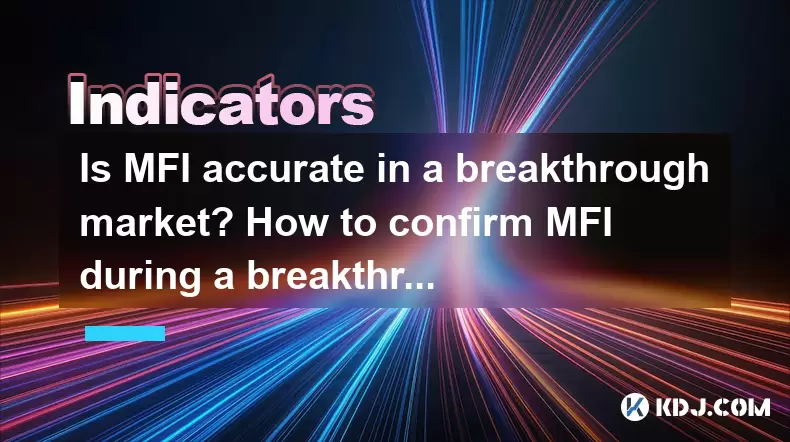
The Money Flow Index (MFI) is a popular technical indicator used by traders and investors in the cryptocurrency market to gauge the strength of price movements and potential reversals. In a breakthrough market, where prices are rapidly moving and often accompanied by high volatility, the accuracy of the MFI can be questioned. This article will explore the effectiveness of the MFI in such conditions and provide detailed guidance on how to confirm MFI signals during a breakthrough.
Understanding the MFI and Its Relevance in Breakthrough Markets
The MFI is a momentum indicator that measures the inflow and outflow of money into a security over a specified period. It is calculated using both price and volume data, making it a more comprehensive tool than other momentum indicators that only consider price. In a breakthrough market, characterized by sharp price movements and increased trading activity, the MFI can provide valuable insights into whether the price surge is backed by strong buying pressure or if it might be a false breakout.
Accuracy of MFI in Breakthrough Markets
In a breakthrough market, the accuracy of the MFI can be influenced by several factors. The MFI's effectiveness largely depends on the volume data it incorporates, which can be highly volatile during breakouts. If the volume surge is genuine and driven by strong market sentiment, the MFI can accurately reflect the momentum behind the price movement. However, if the volume is artificially inflated due to market manipulation or other factors, the MFI may give false signals.
Factors Affecting MFI Accuracy in Breakthroughs
Several factors can impact the accuracy of the MFI during a breakthrough market:
- Volume Spikes: Sudden and significant increases in trading volume can lead to false MFI readings if the volume is not sustained.
- Market Manipulation: In some cases, large traders or groups may manipulate volume to trigger false breakouts, affecting the MFI.
- Liquidity: Low liquidity can exacerbate price volatility, making it harder for the MFI to provide accurate signals.
- Time Frame: The chosen time frame for the MFI calculation can affect its accuracy, with shorter time frames being more sensitive to market noise.
How to Confirm MFI During a Breakthrough
To increase the reliability of MFI signals during a breakthrough market, traders can employ several confirmation techniques:
- Volume Confirmation: Check if the volume increase is sustained over multiple periods. A consistent increase in volume can validate the MFI signal.
- Price Action: Look for strong candlestick patterns or chart formations that support the MFI signal. For example, a bullish engulfing pattern can confirm a bullish MFI divergence.
- Other Indicators: Use other technical indicators like the Relative Strength Index (RSI) or Moving Average Convergence Divergence (MACD) to corroborate the MFI signal.
- Fundamental Analysis: Consider any significant news or events that might be driving the price movement, ensuring the MFI signal aligns with the broader market context.
Step-by-Step Guide to Confirming MFI During a Breakthrough
Here is a detailed, step-by-step guide on how to confirm MFI signals during a breakthrough market:
- Identify the MFI Signal: Look for overbought (above 80) or oversold (below 20) conditions on the MFI chart. Also, watch for divergences between the MFI and price.
- Check Volume: Open the volume chart alongside the MFI. Ensure that the volume increase is consistent and not just a one-time spike.
- If the volume is sustained: This can confirm the MFI signal.
- If the volume is erratic: Be cautious, as this might indicate a false breakout.
- Analyze Price Action: Examine the candlestick patterns and chart formations around the MFI signal.
- Bullish Patterns: Look for patterns like bullish engulfing, hammer, or piercing line.
- Bearish Patterns: Watch for patterns like bearish engulfing, shooting star, or dark cloud cover.
- Use Additional Indicators: Apply other momentum indicators to confirm the MFI signal.
- RSI: Check if the RSI also shows overbought or oversold conditions.
- MACD: Look for MACD crossovers or divergences that align with the MFI signal.
- Consider Fundamental Factors: Review any recent news or events that might be influencing the market.
- Positive News: If there is positive news, it can support a bullish MFI signal.
- Negative News: Negative news might validate a bearish MFI signal.
Practical Example of Confirming MFI in a Breakthrough Market
Let's consider a hypothetical scenario where Bitcoin (BTC) experiences a breakthrough market with a significant price surge. The MFI on a 14-day setting shows an overbought condition above 80. Here's how to confirm this signal:
- Volume Confirmation: The volume chart shows a consistent increase over the past three days, supporting the MFI signal.
- Price Action: A bullish engulfing pattern forms on the candlestick chart, indicating strong buying pressure.
- Other Indicators: The RSI also shows an overbought condition above 70, and the MACD line crosses above the signal line, confirming the bullish momentum.
- Fundamental Analysis: Recent news about institutional adoption of Bitcoin aligns with the bullish MFI signal.
In this example, all confirmation techniques validate the MFI signal, suggesting a strong likelihood of a sustained price increase.
Common Pitfalls and How to Avoid Them
While confirming MFI signals in a breakthrough market, traders should be aware of common pitfalls:
- Overreliance on a Single Indicator: Relying solely on the MFI can lead to false signals. Always use multiple confirmation techniques.
- Ignoring Volume: Volume is a critical component of the MFI. Ignoring volume trends can lead to misinterpretation of the MFI signal.
- Neglecting Market Context: Failing to consider broader market trends and news can result in misjudging the MFI signal's validity.
FAQs
Q1: Can the MFI be used effectively in all types of markets, or is it more suited for certain conditions?
The MFI can be used in various market conditions, but it is particularly effective in trending markets where volume plays a significant role in confirming price movements. In range-bound markets, the MFI may generate more false signals due to less directional momentum.
Q2: How does the MFI differ from other momentum indicators like the RSI?
The MFI incorporates both price and volume data, making it a more comprehensive measure of money flow compared to the RSI, which only considers price. This makes the MFI particularly useful in confirming price movements with volume.
Q3: What time frame should be used for the MFI in a breakthrough market?
The choice of time frame for the MFI in a breakthrough market depends on the trader's strategy. Shorter time frames (e.g., 5 or 10 days) can be more sensitive to market noise, while longer time frames (e.g., 14 or 21 days) may provide more reliable signals but with a delay in response to market changes.
Q4: Are there any specific cryptocurrencies where the MFI performs better in breakthrough markets?
The performance of the MFI in breakthrough markets is not inherently tied to specific cryptocurrencies. However, cryptocurrencies with higher liquidity and trading volume, such as Bitcoin and Ethereum, may provide more reliable MFI signals due to their robust market activity.
Disclaimer:info@kdj.com
The information provided is not trading advice. kdj.com does not assume any responsibility for any investments made based on the information provided in this article. Cryptocurrencies are highly volatile and it is highly recommended that you invest with caution after thorough research!
If you believe that the content used on this website infringes your copyright, please contact us immediately (info@kdj.com) and we will delete it promptly.
- Altcoins Under Pressure: Cardano and XRP Face Critical Tests
- 2025-06-23 12:25:12
- Rare Coin Fever in Wiltshire: Auctions, Errors, and Olympic Gold!
- 2025-06-23 12:25:12
- XRP Price Under Pressure: War Fears and Market Sentiment
- 2025-06-23 12:30:12
- HAI Token Private Key Leak: What Happened and How to Stay Safe
- 2025-06-23 12:45:12
- Texas Goes All In: Bitcoin Reserve Signals Big State Embrace
- 2025-06-23 12:45:12
- Pi Network's Price Plunge: Crash, Scammer Accusations, and What's Next?
- 2025-06-23 13:05:12
Related knowledge
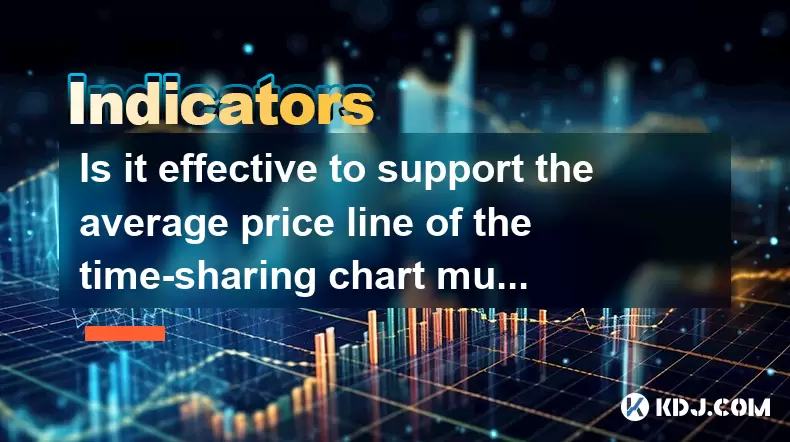
Is it effective to support the average price line of the time-sharing chart multiple times?
Jun 23,2025 at 01:36pm
Understanding the Average Price Line in Time-Sharing ChartsIn cryptocurrency trading, time-sharing charts refer to real-time price charts that display price movements over short intervals, often within a single trading day. Within these charts, the average price line, also known as the Volume Weighted Average Price (VWAP), is a commonly used technical i...
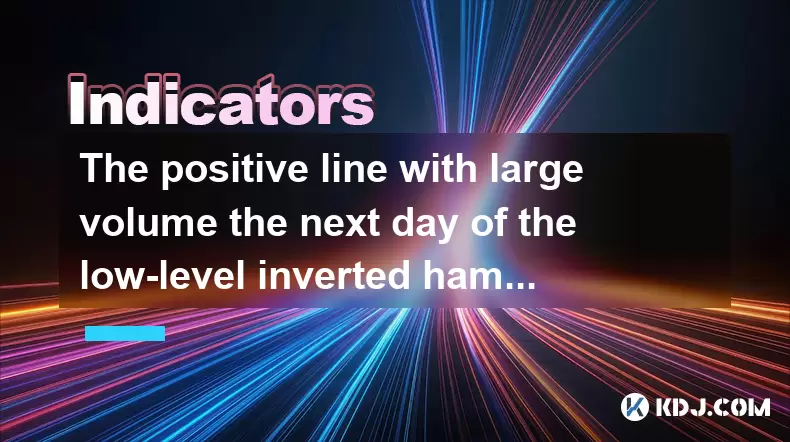
The positive line with large volume the next day of the low-level inverted hammer line confirms the reversal?
Jun 23,2025 at 01:21pm
Understanding the Low-Level Inverted Hammer LineThe inverted hammer line is a single candlestick pattern that typically appears at the end of a downtrend. It has a small real body near the bottom of the trading range and a long upper shadow, indicating that bulls attempted to push prices higher but were met with selling pressure. When this pattern forms...
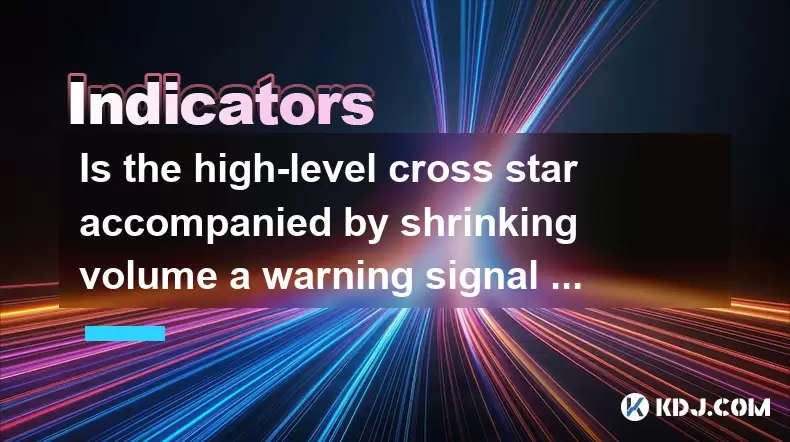
Is the high-level cross star accompanied by shrinking volume a warning signal of peaking?
Jun 23,2025 at 01:28pm
Understanding High-Level Cross Star PatternsIn the world of cryptocurrency trading, candlestick patterns are essential tools for technical analysis. One such pattern is the high-level cross star, which appears as a doji or near-doji candle at a significant resistance level. This pattern often indicates indecision in the market and can be interpreted as ...
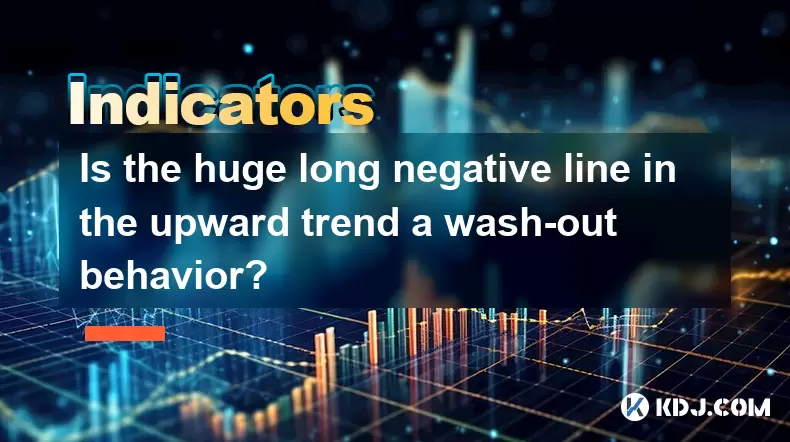
Is the huge long negative line in the upward trend a wash-out behavior?
Jun 23,2025 at 12:49pm
Understanding the Long Negative Candlestick in an Uprising TrendA long negative candlestick, often referred to as a long red or bearish candle, appearing during an upward trend can raise concerns among traders and investors. This pattern typically indicates a sudden and significant drop in price after a period of rising prices. It is often interpreted a...

Can the EXPMA golden cross stand on the 5-day line at the same time?
Jun 23,2025 at 11:42am
Understanding the EXPMA Indicator in Cryptocurrency TradingThe Exponential Moving Average (EXPMA) is a popular technical analysis tool used by cryptocurrency traders to identify trends and potential reversal points. Unlike simple moving averages, the EXPMA gives more weight to recent price data, making it more responsive to current market conditions. In...

Does the second surge in the RSI overbought zone induce more?
Jun 22,2025 at 08:35am
Understanding the RSI Overbought ZoneThe Relative Strength Index (RSI) is a momentum oscillator commonly used in technical analysis to measure the speed and change of price movements. It ranges from 0 to 100, with values above 70 typically considered overbought and values below 30 considered oversold. When the RSI enters the overbought zone for the firs...

Is it effective to support the average price line of the time-sharing chart multiple times?
Jun 23,2025 at 01:36pm
Understanding the Average Price Line in Time-Sharing ChartsIn cryptocurrency trading, time-sharing charts refer to real-time price charts that display price movements over short intervals, often within a single trading day. Within these charts, the average price line, also known as the Volume Weighted Average Price (VWAP), is a commonly used technical i...

The positive line with large volume the next day of the low-level inverted hammer line confirms the reversal?
Jun 23,2025 at 01:21pm
Understanding the Low-Level Inverted Hammer LineThe inverted hammer line is a single candlestick pattern that typically appears at the end of a downtrend. It has a small real body near the bottom of the trading range and a long upper shadow, indicating that bulls attempted to push prices higher but were met with selling pressure. When this pattern forms...

Is the high-level cross star accompanied by shrinking volume a warning signal of peaking?
Jun 23,2025 at 01:28pm
Understanding High-Level Cross Star PatternsIn the world of cryptocurrency trading, candlestick patterns are essential tools for technical analysis. One such pattern is the high-level cross star, which appears as a doji or near-doji candle at a significant resistance level. This pattern often indicates indecision in the market and can be interpreted as ...

Is the huge long negative line in the upward trend a wash-out behavior?
Jun 23,2025 at 12:49pm
Understanding the Long Negative Candlestick in an Uprising TrendA long negative candlestick, often referred to as a long red or bearish candle, appearing during an upward trend can raise concerns among traders and investors. This pattern typically indicates a sudden and significant drop in price after a period of rising prices. It is often interpreted a...

Can the EXPMA golden cross stand on the 5-day line at the same time?
Jun 23,2025 at 11:42am
Understanding the EXPMA Indicator in Cryptocurrency TradingThe Exponential Moving Average (EXPMA) is a popular technical analysis tool used by cryptocurrency traders to identify trends and potential reversal points. Unlike simple moving averages, the EXPMA gives more weight to recent price data, making it more responsive to current market conditions. In...

Does the second surge in the RSI overbought zone induce more?
Jun 22,2025 at 08:35am
Understanding the RSI Overbought ZoneThe Relative Strength Index (RSI) is a momentum oscillator commonly used in technical analysis to measure the speed and change of price movements. It ranges from 0 to 100, with values above 70 typically considered overbought and values below 30 considered oversold. When the RSI enters the overbought zone for the firs...
See all articles

























































































